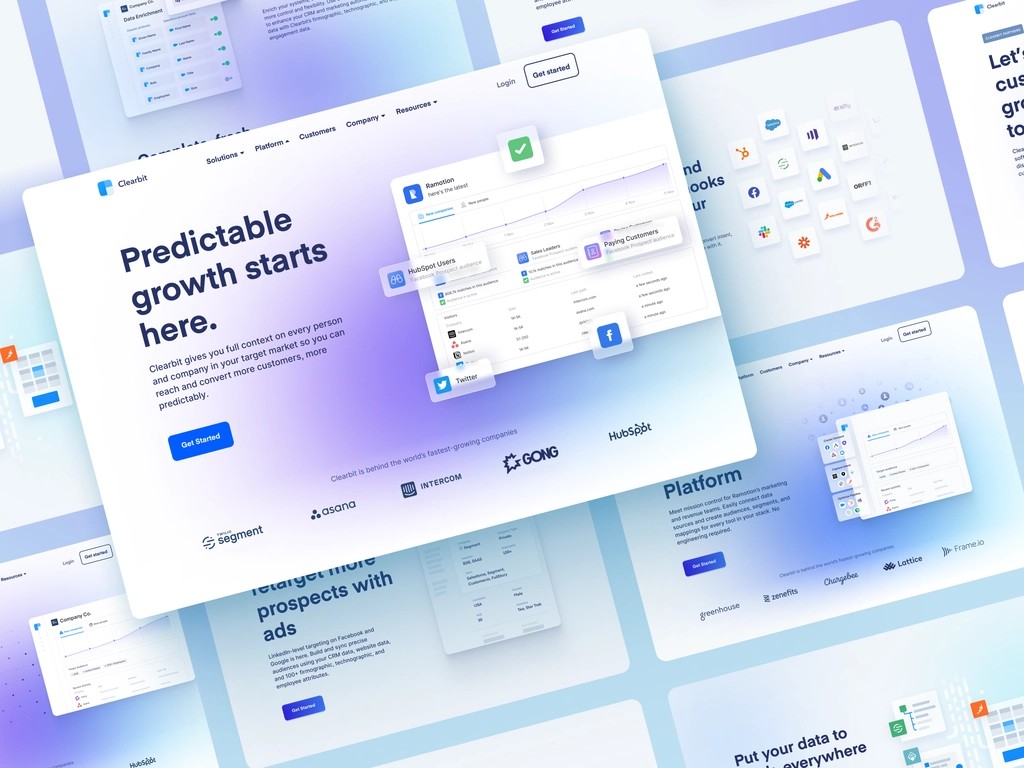What is Software Audit? And Why Do You Need to Understand About It

To newcomers in digital product management, a software audit might seem like a mere technicality. However, investing in regular software audits can yield numerous benefits for business owners. These include expanding user bases, software development cost savings, and mitigating legal risks. In this piece, we’ll define software auditing, address the timing and methodology of software audits, and underscore why this practice should be standard for all software development companies.
Furthermore, we discuss how Savvycom software development experts can act as your external auditor and help you get your product running like clockwork. Let’s take a closer look at how a software engineering audit works.
1. What is a software audit and why is it performed?
A software audit is an independent review of software products, processes, and systems. The purpose of a software audit is to ensure that software development practices and products meet industry standards and organizational requirements. A software audit can help identify issues such as security vulnerabilities, non-compliance with licensing agreements, and performance problems. A study by PwC found that 75% of organizations conduct external software audits at least annually, while 25% conduct them more frequently.
Software audits are usually performed by internal or external auditors who are experts in the software development process. They examine the software development life cycle (SDLC) to ensure that it is followed correctly and that the software product meets the requirements of the business and its stakeholders. The goal of a software audit is to identify areas of improvement and to provide recommendations for enhancing the Software quality assurance and effectiveness of the software product.
There are two primary methods for conducting such analysis:
- Internal auditing is performed on a regular basis by the in-house team and is generally more frequent.
- External audits are often performed by a third party with the goal of obtaining an unbiased report, particularly if the software must comply with specific policies, licenses, and legislative regulations. In addition, if the in-house staff lacks the necessary expertise, an external audit of software can be requested.
In terms of auditing frequency in software engineering, internal inspections should be conducted at least twice a year, and no less than once a year in the worst-case scenario. It is dependent on the specifics of your business and your needs when it comes to external audits.
There is no doubt that the benefits of these examinations outweigh the costs, especially in the long run. We’ve compiled a list of the top five advantages of software audits.
We’ll help you decide on next steps, explain how the development process is organized, and provide you with a free software project estimation.
1.1. Upgrade of obsolete tools

The most versatile purpose of software audits is to look for tools that no longer contribute to overall software performance or even slow it down. This is why software audits should be performed on all types of software.
As a result of the examination, software owners gain a better understanding of the flaws that must be addressed, whether it means replacing a few features or updating the entire platform.
1.2. Efficient license and subscription management
Dealing with multiple fees for licenses, third-party integrations, and subscriptions is common when running software products. At the same time, it can be difficult to keep track of which of them are active and required.
A software project audit’s goal is to detect inactive licenses and subscriptions, as well as tools that software owners no longer require — and thus help avoid unnecessary expenses.
1.3. Advice on business decisions
A thorough audit is required when purchasing software if you do not want to be disappointed with your purchase. Before purchasing any software product, it is recommended that you thoroughly examine all aspects of it, from code style to potential legal liabilities. This will assist you in determining whether significant updates are required, as well as whether it is compatible with your requirements and goals at all.
1.4. Elimination of legal issues
Regular audits assist software owners in avoiding legal issues related to missing licenses, compliance with essential legal requirements and industry standards, and risks associated with data breaches.
For example, managing software for the healthcare industry entails working with a large amount of sensitive data, such as electronic health records. That is why it is critical for the service or platform to comply with certain certifications, data protection laws, and regulations, such as HIPAA in the United States or DPA in the United Kingdom. That’s where software auditing comes in.
1.5. Maintaining the software’s quality
The key to maintaining a trustworthy software product that is constantly growing is to implement regular updates — and these are more effective when implemented based on software audit results.
With technology constantly evolving, there are always ways to improve software quality, whether in terms of cybersecurity, new features, cloud computing solutions, or product maintainability. Software audits assist product owners in making informed decisions about which problems and updates should be prioritized.
To summarize, a software audit is essential for ensuring that the software is secure, convenient, efficient, and free of legal issues. Furthermore, all of the aforementioned advantages of a software analysis result in the efficient use of resources, which saves businesses money in the long run.
Have a Project Idea in Mind?
We’ll help you decide on next steps, explain how the development process is organized, and provide you with a free project estimate.
2. So, when should you conduct a software audit?
As previously stated, every software product requires regular internal comprehensive audits in order to remain secure, up-to-date, and growing. But what about situational audits, both internal and external, and when should a software owner request them? . A study by Gartner found that software audits can reduce the number of defects by up to 30%.
A software audit can be conducted at any stage of the SDLC. However, it is best to conduct an audit when the software is in its development or testing phase. This is because it is easier to identify and fix issues early in the SDLC, rather than after the software has been released.
Additionally, it can also be conducted when there is a change in the business requirements, regulatory environment, or technology landscape. These changes can affect the software product, and a software audit can help identify any gaps or weaknesses in the product.
To sum it up, we recommend performing a software inspection when:
- The software has not been updated in a long time and requires new solutions.
- The product’s performance has slowed, and it is no longer responsive.
- The software has been subjected to a data breach or other security risks.
The product has stopped working properly, and your internal team is unable to identify the issue. - There is a need to reduce product maintenance costs.
- Your in-house team lacks the time and expertise to conduct a thorough software audit.
- Before deploying to fleet services, you want to detect and resolve any potential issues.
- You are considering purchasing a software product and want to ensure that the product is worthwhile.
3. Which types of software audit should you go for?

Before conducting a software audit, it is important to consider the scope of the audit, the audit team, and the audit objectives. The scope of the audit should be defined clearly to ensure that all relevant areas are covered. The audit team should be comprised of experts in software development and auditing. The audit objectives should be clearly defined and aligned with the business goals.
It is also important to consider the audit methodology, tools, and techniques to be used in the audit. The audit methodology should be consistent with industry standards and best practices. The tools and techniques used in the audit should be appropriate for the software product and the audit objectives.
3.1. Code review
Is the software product’s code compliant with industry standards? How simple is it to scale and maintain? These are just a few of the questions that a code audit (a thorough examination of frontend and backend code) can help answer.
Software code auditing also assists in locating existing bugs and detecting issues that may arise later, identifying technologies that are no longer efficient, and providing recommendations on how to improve the code. Finally, it helps determine whether the product is ready for scaling.
3.2. Infrastructure inspection
An infrastructure audit evaluates the performance of all components critical for development, deployment, and server management. The server is in the spotlight here because data communication, gateways, and system management rely on it.
When analyzing the software infrastructure, the specialists conducting the audit typically pay close attention to costs, service availability, documentation, and resource utilization.
3.3. Architecture inspection
The architecture audit procedure examines the system’s components, determining how well they interact with one another and, as a result, the overall system’s flexibility. To be more specific, it entails the examination of databases, services, integrations, and other components.
3.4. Audit of security
The goal of security auditing is to detect and protect the company from potential security threats such as user data breaches, cyberattacks, data loss, and other similar incidents. Preventing your product from experiencing security issues saves your company money in the long run, as these almost always result in lawsuits, not to mention huge reputational losses.
A security audit detects potential threats and recommends a package of solutions, such as investing in malware protection tools, strong firewalls, SSL-encrypted data transmission, and so on.
3.5. Audit of maintainability
The ease of maintenance of software is directly influenced by the quality of the code and the technologies used. The audit’s task here is to identify ways to improve maintainability by detecting obsolete solutions and chaotic, low-quality code. And, while repairing these issues can be costly, it will save you money in the long run.
3.6. Audit of usability and accessibility
In most cases, the success of your software is determined by how simple it is for the average user to access and navigate. That’s why a usability and accessibility audit is essential before releasing your software — or if you’re unhappy with the size of your active user base.
We typically discover common issues during these audits, such as overly complicated or confusing onboarding, which leads to high bounce rates, and a lack of user-friendly UI/UX design solutions. Those, on the other hand, are completely repairable.
4. What you need to consider before auditing software?

So, how does one go about requesting a software audit? What preparations must be made prior to the procedure? Here are four steps to help you prepare for the software audit process.
4.1. Identify the primary objectives of a software audit
Before requesting a software audit, you must first determine why you want the audit and what you hope to gain from it.
How do you assess your product’s current state? Is there anything wrong with the software right now? Are you concerned about its safety? Or do you simply want to conduct a thorough examination of the product? These questions will assist you in defining your goal.
4.2. Create a software audit checklist
Now that you’ve determined the objectives of the audit, you can begin estimating the scope of the audit and developing a checklist for the specialists who will be examining the software.
For example, depending on the problems your software is experiencing, the list could include third-party integrations analysis, security audits, sales funnel optimization, and so on.
4.3. Locate a reliable software auditing partner
If your team is not qualified to perform the desired type of software audit or you require an unbiased opinion, you can hire a team of audit specialists to perform the inspection for you. Check their experience in the relevant industries and go over the reviews from their previous clients during your communication with the candidates.
4.4. An additional tip for internal audits
While it is not a step in the software audit preparation process per se, we must emphasize the importance of software audits performed on a regular basis by an in-house team.
Even if your specialists lack the expertise to examine every aspect of the software product, a partial analysis will help you avoid critical crashes and threats, making external audits less stressful, time-consuming, and expensive.
Looking For a Trusted Tech Partner?
We’ll help you decide on next steps, explain how the development process is organized, and provide you with a free project estimate.
5. Checklist for conducting a software audit
Here is a checklist for conducting a software audit:
-
Review the software development process to ensure it meets industry standards and best practices.
-
Verify that the software product meets the business requirements and specifications.
-
Check for compliance audit with licensing agreements and intellectual property rights.
-
Review the software testing process to ensure that it is rigorous and thorough.
-
Test the software for performance, security, and reliability.
-
Verify that the documentation is complete and accurate.
-
Reduce security risks by analysis to identify potential risks and vulnerabilities.
-
Review the change management process to ensure that changes are controlled and documented.
-
Software verification: Make sure that the software product is maintainable and scalable.
-
Prepare a report of findings and recommendations.
-
What should be included in the results of the software audit?
The results of the software audit should include a report of findings and recommendations. The report should provide a summary of the audit scope, objectives, and methodology. It should also include a detailed analysis of the findings and recommendations for improvement.
The report should be easy to understand and should provide actionable recommendations. It should also include a prioritized list of recommendations, based on their importance and impact on the software product.
6. What should the software audit report look like?
When the software audit is finished, the team in charge presents the main outcome of the procedure — an audit report. Essentially, it is a summary of the issues discovered, recommendations for how to resolve them, and milestones that must be met before the next audit.
The suggestions differ depending on the type of report, but the following are the most common:
- Code enhancement suggestions, such as code cleanup and changes to code structure and style
- Suggestions for existing bug fixes, unused modules, conflicting logic in modules, and so on.
- Proposals for improving software logic, and performance, adding new efficient technical features, improving software security, and removing redundant software tools
The report’s recommendations must be prioritized based on the importance of the tasks. A data breach risk, for example, will be more critical than changing the user interface. Mind Studios’ team also considers our clients’ budget for immediate changes and adjusts the suggestions accordingly.
Estimates for code refactoring and rework scope are also important components of a software audit report. Frequently, the party conducting the software audit and preparing the report will include recommendations for software making company who can implement the proposed improvements.
7. Summary
In conclusion, a software audit is an essential part of software development. It ensures that software products meet industry standards, business requirements, and regulatory compliance. It is best to conduct a software audit early in the SDLC to identify and fix issues before the software is released. Before conducting a software audit, it is important to consider the scope, objectives, and methodology. The results of the software audit should include a report of findings and recommendations for improvement.
Savvycom – Your Trusted Tech Partner
Since 2009, Savvycom has been leveraging Digital Technologies to facilitate business growth across various industries, offering a range of services from Tech Consulting and End-to-End Product Development to IT Outsourcing Services. We specialize in developing high-quality software solutions and products, in addition to providing a diverse array of associated professional services. This positions us as a valuable partner for software outsourcing companies seeking to enhance their offerings.
Savvycom is right where you need. Contact us now for further consultation:
- Phone: +84 24 3202 9222
- Hotline: +84 352 287 866 (VN)
- Email: [email protected]
How Should You Prepare For A Software Audit?
To conduct a software audit with minimal to no errors, you should:
- Maintain Consistent Communication with Your Software Vendor
- Provide Accurate Proof of Ownership to Your Auditors
- Purchase a Software Asset Management solution
- Do frequent audits (likely monthly)
- Select the Appropriate Software Asset Management Partner
What Can You Do After A Software Audit?
Act on your findings once you've completed a software audit. Here are six things you can do.
- Uninstall outdated software from particular devices.
- Replace any obsolete software.
- Purchase any additional licenses if there is a discrepancy between licenses and installations
- Keep track of and document any actions you take following an audit.
- (Re)Emphasize software regulations to employees as necessary
- Make a strategy for the upcoming audit.



